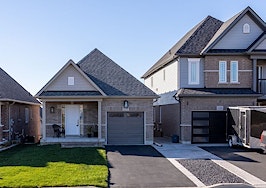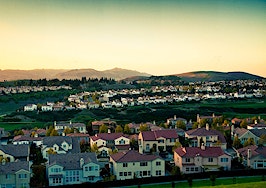The homeownership rate increased slightly in the first quarter of 2021, but its change was not statistically significant from previous quarters, despite the unusually high housing market demand.
The homeownership rate for the first quarter of 2021 was 65.6 percent — nearly equal to the first quarter 2020 rate of 65.3 percent and the fourth quarter 2020 rate of 65.8 percent, according to the latest report from the U.S. Census Bureau.

Similar to the numbers seen in 2020, the first quarter 2021 homeownership rate was highest for consumers aged 65 years and over at 79.3 percent and lowest for those under 35 years of age at 38.1 percent, the report showed.
While home sales and housing demand continued to hit record highs in 2020, the age group buying homes were older Gen Xers or millennials. Many younger millennials and other first-time homebuyers were priced out of the market, leaving the homeownership rate virtually unchanged from last year.
“The first quarter of this year saw unseasonably high demand for housing, driven by many peoples’ desire to find a home and leverage favorable financing,” realtor.com Senior Economist George Ratiu said. “The gain in homeownership made by those in their mid-30s to mid-40s suggests that many older millennials and Gen Xers were successful at finding homes. However, the solid demand continued to shrink the number of homes available for sale, driving prices even higher compared with a year ago.
“For first-time buyers, the shortage of inventory is proving frustrating,” Ratiu said. “The hopeful news is that a recent survey indicates that a noticeable number of sellers are planning to bring homes to market this year, at affordable price points. The boost in inventory should moderate price gains and rebalance real estate markets.”
For homeownership rates by race, the first quarter 2021 homeownership rate for white households reporting a single race was highest at 73.8 percent. The rate for Asian, Native Hawaiian and Pacific Islanders was second at 59.6 percent and the rate for Black households was lowest at 45.1 percent. The homeownership rate for Black households was higher than the rate in the first quarter 2020 when it was 44 percent, while all other categories were not statistically different.
But the National Association of Hispanic Real Estate Professionals’ 2020 annual report showed the Hispanic homeownership rate rose for the sixth consecutive year to 49 percent. Mortgage applications for this group rose 13 percent from 2019, representing more than 600,000 new homeowners.
A report from the National Association of Realtors in February showed that, at the time, at 42 percent, Black Americans’ homeownership rate was nearly 40 percent behind white Americans’ rate of 69.8 percent, over 30 percent behind Asian Americans’ 60.7 percent and more than 13 percent behind Hispanic Americans. White Americans were the only group to have a homeownership rate that’s on par with the national average of 64.2 percent.
National vacancy rates in the first quarter 2021 were 6.8 percent for rental housing and 0.9 percent for homeowner housing. The rental vacancy rate of 6.8 percent was not statistically different from the rate in the first quarter 2020’s 6.6 percent and 0.3 percentage points higher than the rate in the fourth quarter 2020.
The homeowner vacancy rate of 0.9 percent was 0.2 percentage points lower than the rate in the first quarter 2020 and 0.1 percentage points lower than the rate in the fourth quarter 2020.













